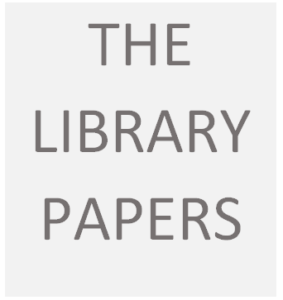1.5 Returning
The essential question I asked at the start of this course was: “How can instructional design incorporate both face-to-face and online components to facilitate effective and engaging learning experiences for learners?”
Through the course of these assignments, I think I did focus successfully on the online components—in pursuing my goal to become familiar with digital authoring tools, I learned (with great difficulty) to create artifacts using Camtasia and PowToons; working with my blog, I learned how to embed my self-hosted videos using iFrames and how to embed video from other sites. This wasn’t as hard as I thought it would be, and it was certainly easier than learning to use Camtasia. Because I have seen students using video editing software of various types, I had assumed it would be a lot easier. I have a new-found respect for anyone who can do this, and a much clearer understanding of what one is asking of students when one assigns a video editing task as part of a larger project. And a much better idea of what students need to know when you are trying to teach them how to use this software.
Overall, I was pleased with my 2nd and 3rd Learning Curations on multi-modal tools and critical literacy respectively. In the multi-modal one, I felt I was able to blend digital and face-to face components as per my original aim, and in the critical literacy one, to address digital and media literacy as well, which was an unexpected bonus, since I hadn’t really considered those other kinds of literacy in my question. I explored both of these types of literacy in more detail in my 4th Learning Curation, and also how the librarian can offer a unique additional perspective in conjunction with the classroom teacher’s instruction by fostering the mindful use of these online tools through these new ‘literacies.’ And finally, in Assignment 3 I feel I made a good start on developing a collaboration tool to work with teachers on inquiry-based projects, incorporating a variety of digital authoring tools (and the literacy skills that go with them), which was another of the goals I set for myself.
As for my other goals, I’m not sure I was able to find ways to help students blend formal and informal learning, to access networks of affinity groups, to address the digital divide, or to consider how to create Makerspaces. But as I said about my essential question, it was a large and not very well-defined question, the answers turned out not to be connected in the way I had imagined, and there’s always next semester. And really, the best part of learning is finding out things you didn’t even know you didn’t know, which is what happened to me at every turn along the way.
The most unexpected thing I learned was that I really love working with these tools, and this course gave me the license and leeway to experiment and explore almost to my heart’s content, and ended up giving me a different way to think about what education can be for all students. I found the following quote from the teacherlibrarian.com website was an inspiring and succinct description of what this means for education and the role of the teacher:
“The effective use of educational makerspaces form the basis for a new paradigm in education which is actually a remaking of former systems, such as the artisan system, in which a master or mentor took an understudy. In our technicolor society, we desperately need to move from the gray hues of our recent educational past to a panoply of vibrant colors and a desire for our students to experience the ecstasy of creating their own stunning masterpieces.” (http://teacherlibrarian.com/2014/06/18/educational-makerspaces/). I don’t know if I’d claim to have experienced ecstasy when creating the artifacts I made for this course, but it was pretty close to that. And I have come away from this course harbouring the ambition of influencing my corner of the education system to look like that as well.



